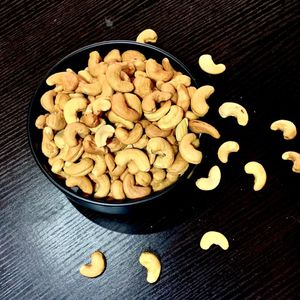Product Details
Shea nuts, also known as karité nuts, are the seeds of the shea tree (Vitellaria paradoxa), native to the savannah regions of West and Central Africa. These nuts are primarily known for their rich oil content, which is extracted to produce shea butter, a valuable ingredient in cosmetics, skincare, and food industries.
Physical Characteristics
Appearance: Oval to elliptical in shape
Color: Brown to dark brown outer shell
Size: Approximately 2-5 cm in length
Texture: Hard, smooth shell enclosing a softer, oil-rich kernel
Aroma: Mild, earthy scent
Nutritional Information (per 100g of kernels)
Calories: 700 kcal (approximate, depending on oil content)
Total Fat: 70-80 g
Saturated Fat: 35-45 g
Monounsaturated Fat: 30-40 g
Polyunsaturated Fat: 5-10 g
Protein: 5-10 g
Carbohydrates: 10-15 g
Dietary Fiber: 5-8 g
Vitamins and Minerals:
Vitamin A
Vitamin E
Calcium
Iron
Magnesium
Chemical Composition
Triglycerides: Major component, contributing to the fat content used in shea butter production
Unsaponifiables:
Phytosterols
Tocopherols (Vitamin E)
Triterpenes
Benefits and Uses
Shea Butter Production
Primary Use: The primary use of shea nuts is to extract shea butter, which is highly valued for its moisturizing, anti-inflammatory, and healing properties.
Cosmetic Industry: Shea butter is used in creams, lotions, soaps, and hair care products.
Food Industry: In some regions, shea butter is used as a cooking fat or in confectionery products as a cocoa butter substitute.
Nutritional Benefits
Rich in Healthy Fats: Contains high levels of saturated and unsaturated fats, beneficial for skin health.
Antioxidants: Contains Vitamin E and other antioxidants that help protect cells from damage.
Traditional Uses
Medicinal: Used in traditional African medicine for treating skin conditions, wounds, and rheumatism.
Culinary: The oil extracted from shea nuts is used in traditional African cooking.
Quality Standards
Purity: Free from impurities and foreign matter
Moisture Content: ≤ 7%
Oil Content: ≥ 45%
Free from: Pesticides, toxins, and microbial contamination
Harvesting and Processing
Harvesting: Typically handpicked from wild shea trees
Processing: Nuts are boiled or sun-dried, shelled to extract the kernels, which are then dried and stored for further processing into shea butter
Packaging
Material: Food-grade sacks or bulk bags (e.g., jute or polypropylene)
Weight Options: 25kg, 50kg
Basic Information
Name
Shea Nuts
Product
시어너트
Origin
나이지리아
Specifications
Grade A
Whole
About the Supplier
/200x200/company-logo/fb/bd/cd/fbbdcd86a25f76010dde42111daae87725f723a4/New_STCL.png)
Business Type
Country

영국
Year Established
2024
Number of Employees
Annual Sales Revenue
Has Warehouse
No
Related market data
Other products from the supplier

Cashew nuts · 나이지리아
Variety: Cashew Nut | Processed Style: Raw, Fresh, Roasted - Unsalted, Dried | Form & Cut: Kidney Shape, Whole | Cultivation Type: Non-GMO | Packaging Type: PP Bags (50kg), PP Bags (45kg), PP Bags (40kg), PP Bags (25kg), As per customer's request, Carton Box, Jute Bags | Grade: Grade A, Premium Quality | Size: Premium King, Large | Shell: Shelled

Soybean · 나이지리아
Variety: Unspecified | Processed Style: Raw | Form & Cut: Whole | Cultivation Type: Non-GMO | Packaging Type: Jute Bag (25kg), PP Bags (50kg), PP Bags (45kg), PP Bags (40kg), PP Bags (30kg), PP Bags (25kg), As per customer's request, In Bulk (exports) | Color: Green, Yellow | Grade: Excellent Quality, Grade A, Premium Quality | Size: Small-Medium
Representatives

O Esunu · Supplier
By clicking “Accept Cookies,” I agree to provide cookies for statistical and personalized preference purposes. To learn more about our cookies, please read our Privacy Policy.
/1120x558/supply-main-image/cf/46/1a/cf461a27b8d90ec72625679b23278f1ea6ea6320/blob.jpeg)

/104x104/company-logo/fb/bd/cd/fbbdcd86a25f76010dde42111daae87725f723a4/New_STCL.png)







